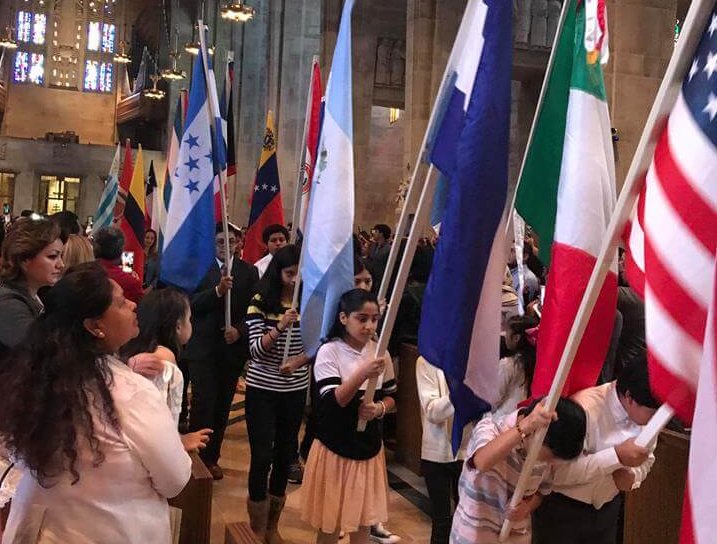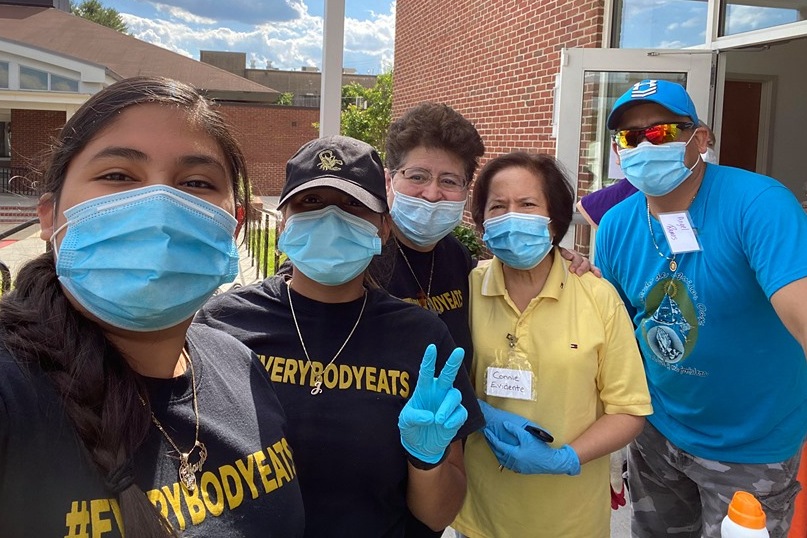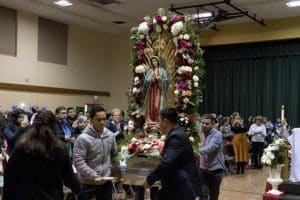
September ushers in waves of celebrations across much of Latin America as nine countries within the hemisphere celebrate their independence.
On Sept. 15, the same day Nicaragua, El Salvador, Guatemala, Honduras and Costa Rica declared independence from Spain in 1821, Hispanic Heritage Month kicked off as many in the United States highlight the rich Latin diversity of the nation.
According to the latest data available from the United States Census Bureau, 10.4 percent of Marylanders identify as being of Hispanic or Latino origin. Although shy of the national population share – 18.3 percent of people in the U.S. identify as being of Hispanic of Latino origin – Baltimore City and many other parts of the state have seen a steady increase of Spanish-speaking residents over the past decade.
With that increase has come waves of new parishioners to the Archdiocese of Baltimore. In response, churches across Maryland have taken steps to help welcome Hispanics and weave them into the fabric of their communities.
Father Jaime Garcia-Vasquez of St. Francis de Sales in Abingdon and Prince of Peace in Edgewood came to Maryland from his native Colombia in 2007 to help the archdiocese minister to the growing Hispanic community. Speaking little to no English and never having experienced a Northeast winter, he was greeted at the Newark airport on Jan. 1 with a six-hour weather delay for his transfer to Baltimore-Washington International Thurgood Marshall Airport.

“I was leaving behind everything that I knew,” Father Garcia-Vasquez remembered. “The United States was never part of my plan, but those were human plans. God had other plans for me.”
Before Father Garcia-Vasquez’s arrival at St. Francis in 2015, the parish had two youth groups – one predominantly Hispanic and the other non-Hispanic. Now, there’s one youth group that focuses on inclusion, as well as other parish initiatives with the same focus.
“It has to come from an understanding that we are all one community,” Father Garcia-Vasquz said. “Everyone is pitching in to make us feel like one community.”
Feast days and special liturgies have a different cultural flavor across Latin America. Much like in his native Colombia, Father Garcia-Vasquez’s Holy Thursday celebrations involve a procession of the Eucharist after Mass; similarly, Palm Sunday Mass starts with a procession from outside the church into the sanctuary. According to the priest, these methods of worship captivated many non-Hispanic parishioners, who then wanted to get involved.
Many parishes across the archdiocese mark Hispanic Heritage Month with Marian devotions common across Latin American nations. That includes the celebration of Nuestra Señora de la Nube (Our Lady of the Heavens) of Ecuador or Nuestra Señora de Guadalupe (Our Lady of Guadalupe) from Mexico. These and other celebrations are often spearheaded by the parishes’ own Hispanic ministry committees, or Consejos Pastorales Hispanos, which many churches have as avenues to connect Hispanic heritage to the overall identity of the parish.

Father Garcia-Vasquez celebrates Mass in Spanish on Sundays at St. Francis de Sales, one of 21 churches across the archdiocese where Spanish Mass is available throughout the week. Another such church is St. Gabriel in Woodlawn, a vibrant parish community made up of people coming from 37 different countries, including Spain and 11 Latin American nations.
Mission Helper of the Sacred Heart Sister Sonia Fernandez, a New Yorker of Puerto Rican descent, is no stranger to diverse communities. Before entering the novitiate in Baltimore, she worked for the American Heart Association in Queens, N.Y., in addition to teaching as a catechist. Her job asked her to pick up and move to Texas, which prompted some big questions for her – she sought discernment from a spiritual retreat where she met a group of religious sisters from all across Latin America.
“I knew a lot of religious, but I had never met a Hispanic one,” Sister Sonia said. She did end up going to Texas, but not with the AHA. She went as part of her religious formation to work with the Mexican community in San Antonio after deciding to leave her job for the novitiate.
Much like at St. Francis, the staff at St. Gabriel, under the leadership of the pastor, Monsignor Thomas L. Phillips, has incorporated into the liturgies many cultural elements from the traditions of their widely African and Hispanic parishioners. Readings are often done in several languages, as are the songs sung by one of the church’s several different choirs.

St. Gabriel is home to many parishioners from El Salvador, the native land of St. Oscar Romero, assassinated by the Salvadoran military in 1980 and widely revered as the unofficial patron saint of the Americas. Twice a year, in March and October, St. Gabriel parishioners celebrate the death and canonization of San Romero respectively, a wooden statue of whom was brought from El Salvador to adorn the sanctuary within the church.
Formal Hispanic ministry in the Archdiocese of Baltimore goes back as early as the 1960s, when the Apostolado Hispano, which today has become the Esperanza Center and is run by Catholic Charities, started providing English language tutoring for immigrants in Baltimore City.
Today, in tandem with the individual ministries of parishes around the archdiocese, the Office of Hispanic Ministry, formally integrated within the Catholic Center in 2000, works to accompany Hispanic Catholics in Baltimore in their faith development and support area parishes. The office, headed by Lia Salinas, ensures that the archbishop and vicar bishops stay abreast of issues affecting the Hispanic community.
Bishop Bruce Lewandowski, C.Ss.R., serves as both Episcopal Vicar for the Hispanic Community and pastor of the predominantly Spanish-speaking Sacred Heart of Jesus/Sagrado Corazón de Jesús in Highlandtown.
The Office of Hispanic Ministry will have a float in the “Caravan Fiesta Baltimore” Sept. 27.
Copyright © 2020 Catholic Review Media

